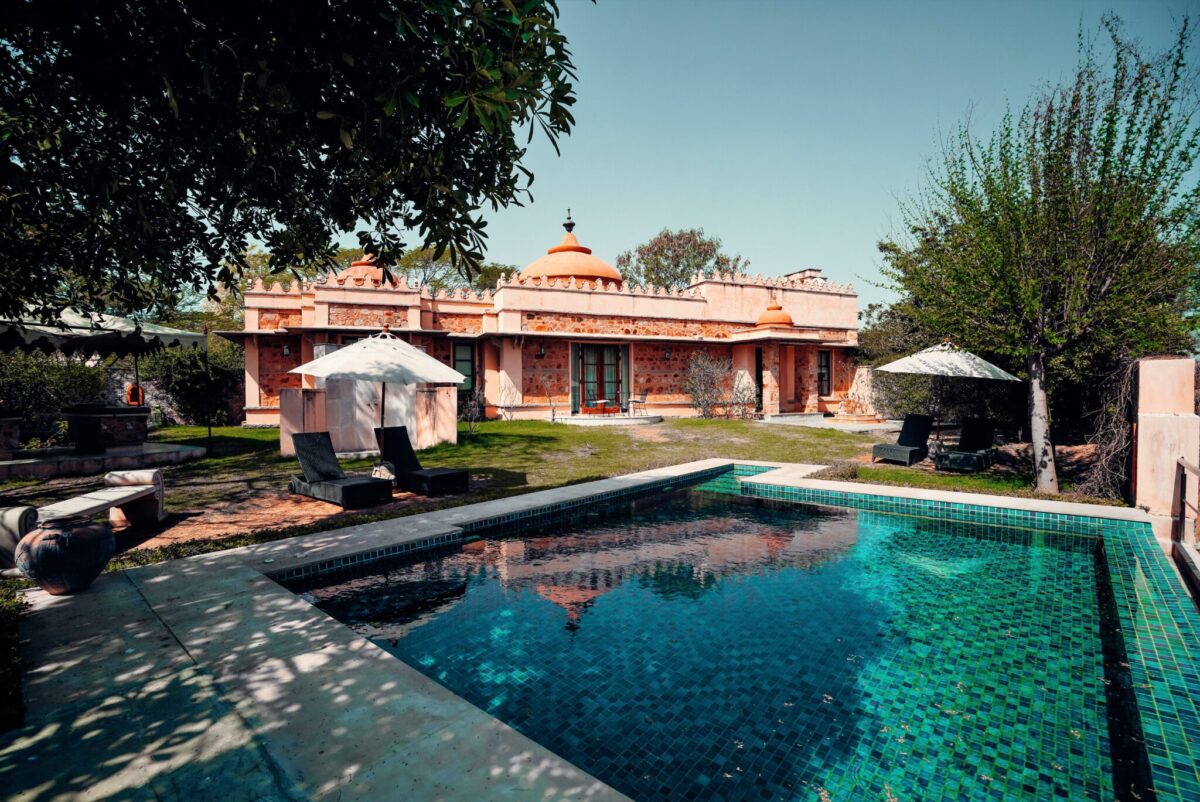How India's Tree of Life Is Creating a Place for Itself in the Hospitality Sun

Skift Take
Tree of Life Resorts and Hotels, a boutique property chain from India, has seen impressive growth from just five properties pre-Covid to 13 properties currently, with the 14th property opening next month.
Founder Himmat Anand said he has Covid-19 to thank for this growth, as he believes it helped position his resorts perfectly.
During Covid, the hotel chain registered the best two financial years since opening in 2013. Anand credits this success to having the right product at the right time.
Anand, who had spent five years as the chief operating officer at Kuoni, India's largest inbound operating company at that time, realized that he had hit a career ceiling and decided to embark on his entrepreneurial journey in 2009.
Tree of Life Takes Root
At a time when most hotel companies were focused on opening properties in urban areas, he chose to construct 14 villas on his six-acre estate just 30 minutes from Jaipur airport.
People warned him against it with some even predicting that this was doomed for failure.
With hindsight, Anand believes not being from a hospitality background helped him experiment, even as he admitted, “I've been through the toughest period of my life from 2010 to 2013 trying to put that product on the map.”
But the choice to not be near the city center stood him in good stead almost 10 years later, when post-Covid travelers came searching. Space and privacy, which were the tenets on which Tree of Life came into existence, were exactly what these social-distancing visitors wanted.
“The mindset of the traveling public changed post-Covid as they avoided 100-room city hotels with long corridors and elevators. Covid gave me the opportunity to tick all those boxes which the guest wanted,” the founder of the boutique resort chain said.

The Dream of Owning Just One Resort
Once the lockdown in India was lifted, Anand lost no time in rehiring people and also upped the company’s social media game.
As people were avoiding flying at the time, having hotels within five hours' driving distance from source markets helped Tree of Life launch driving holidays and staycation programs. “In those two years of Covid, we signed five hotels,” he said.
According to Anand, owners saw logic in what Tree of Life had been doing and he’s happy he didn’t expand his wish list. “We continue to remain small. Our smallest property has six keys and the largest has 20.”
Expansion had never been on Anand’s mind when he started in 2010. “When I started Tree of Life Jaipur, my intent was to only have one resort. But then my son joined me and aspired to take the brand wider.”
The expansion from one to 13 for Tree of Life actually started from 2015 onwards and now two more properties have been confirmed. By March 2024, Anand expects to have 18 Tree of Life Hotels and Resorts.
Of the 13 hotels that he currently operates, Anand owns three properties — the Tree of Life in Jaipur, Varanasi and Agra. The others are leased or managed. Going forward, the company doesn’t plan to add any more inventory of its own and will only look to lease or manage properties.
Experimental Ideas
Anand has also been fairly experimental in his hotel ideas. Last year he toyed with the idea of Tree of Life Ecotainers, which he himself calls a “crazy idea.”
He bought about three acres of land, five years ago, around 20 minutes from Agra — the land of the Taj Mahal — and started building rooms from shipping containers.
As a test run, four units were completed and launched last year. The plan is to rack it up to 16. The response, Anand admitted, has been a tad slow, but he’s not surprised.
The property however, found takers among guests traveling with pets.
And Anand couldn’t be happier welcoming pets to his properties as the dog-lover had always decided that all his properties would be pet-friendly.
As he puts it, rather strongly, “Animals have more respect for one’s property than human beings. I've never had a dog misbehave at my property. They don't scream, shout, play loud music or steal things!”
And for screaming, shouting guests, Tree of Life has a strict no-tolerance policy, TripAdvisor reviews be damned. According to Anand, many hotel chains in India take Atithi Devo Bhava (Guest is God) to an extreme.
"I've made it explicitly clear at the Tree of Life that if guests want to be treated well, they must know how to treat the staff. It can't be one-sided," he said.

Smaller Properties Finally Make it Big
Happy about smaller boutique properties finally getting their place in the sun, Anand said the growth had been there for a decade, but Covid helped accelerate that.
Luxury was the trend five years ago, but post-Covid, it's all about selling experiences. However, Anand believes 200-room chains can't compete with 10-key properties in terms of guest experience.
No wonder bigger hotel chains are now creating brands for smaller properties, such as Ama Stays and Trails by Indian Hotels Company, Storii by ITC Hotels, and Radisson Individuals Retreats launched for the India market.
Anand considers this development great news for the sector. However, he believes there should be some sort of regulation or guidelines in place for the increasing number of such properties.
If left unchecked, he worries that this growth may lead to unfortunate incidents, prompting the government to suddenly crack down on the entire industry.
Incredible India Gasping for Breath
Anand believes that the government can do a lot more to boost Indian tourism. He lauded the Incredible India campaign as an amazing success when it launched two decades ago, stating it created a huge wave for almost 10 years. However, he feels that the campaign has been gasping for breath for the past five years.
According to Anand, the ministry of tourism could have piggybacked on that success to create something even better.
“It's a sorry state of affairs. And we have no right to crib that we get only 10 or 12 million foreign arrivals, we deserve no better,” he said.
And while Anand has little confidence in India’s inbound arrivals growing exponentially, he agrees that the domestic market is here to stay. The Indian Tourism Statistics 2022 report reveals India received 678 million domestic tourist visits in 2021, a 11 percent increase from 2020.
Anand estimates that even if his audience only makes up 10 percent of the 678 million, the number is still significant. “In reality, inbound brings not more than 6 million people,” he said.
With Covid helping hospitality units like Anand's adjust their target audience lens, he's keeping his eyes firmly focused on the domestic traveler.





